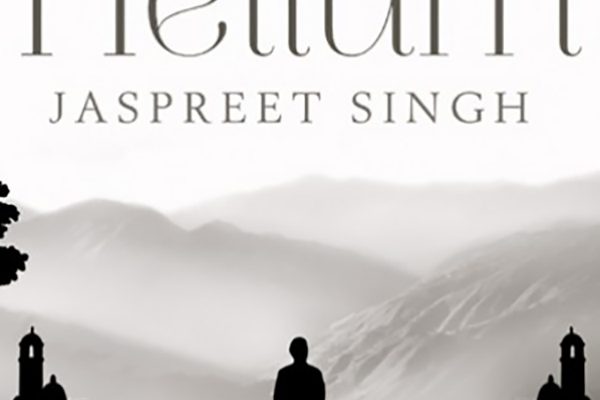The year 1984 was catastrophic for India’s Sikh community. On 6 June, the then Prime Minister Indira Gandhi ordered her troops to fire on the Golden Temple, killing thousands. On 1 November, the day after Gandhi was assassinated by two of her Sikh bodyguards, a pogrom of the country’s Sikhs occurred during which up to 8,000 people died. The government and police force were believed to be hand in glove in these crimes.
In his third book Helium, Indian-Canadian writer Jaspreet Singh investigates this massacre. At the centre of the book is Raj, the narrator. Raj is a chemical engineering professor at Cornell University who gained his first degree in Delhi. His whole life, he is haunted by a memory—when he was a 19-year-old student and had to watch his beloved professor being incinerated. Twenty-five years later he returns to India to seek out his late professor’s widow and find out more about what happened. In the process he also examines his feelings about his father, a retired police chief, who may have been involved in the attacks.
Singh touches upon an under reported and neglected aspect of Indian history; the book sensitively talks about the bloodied anti-Sikh pogroms and 2002’s anti-Muslim ones. Singh through his narrator is also rancorous towards the new booming India and its post-colonial denial of old sins whilst new money flows to a lucky few. He minces no words when he criticises a country and society’s ability to turn a blind eye when its own people were getting burnt. Singh writes, “Dozens of Sikh bodies on fire. Smell of burning wool and rubber tyres and human flesh … the black cloud of smoke touched the sky … this was our Periodic Table of hate.”
But Singh’s Raj is not an easy narrator his testimony drifts and meanders like the foggy mists of Shimla; a place which predominately features in the book. These digressions could partly because of his identity as a somewhat paranoid man prone to mistakes, but more eloquence would have kept the narrative tighter.
Singh’s writing always has an astute scientific side: Our narrator’s area of study is rheology, the study of flow, whether volcanic lava or money or memory or blood. In the years after the killing of his professor, the student attempts to estimate the speed with which fire engulfs the average human body, but cannot finish the calculations.
Helium has science, but it is also a very literary book. Primo Levi’s work on the death camps haunts these pages and small black-and-white photos are interspersed akin to German writer W.G. Sebald’s style; there are mentions of Chilean writer Roberto Bolano, Russian writer Vladimir Nabokov and English George Orwell.
Helium is not for the light-hearted it gives you the goose bumps which doesn’t go away so easily and the extent of human hate and the unabashed way power veils the truth haunts your senses to no extent. There’s a part when a politician offers the Congress Party immunity from investigation for the 1984 anti-Sikh pogroms. The condition is that he in turn must promise not to delve into the 2002 anti-Muslim pogroms by the Hindu party.
It kept me awake for days and in that way Helium is like an unforgiving mirror of halls reminding us of our depth of hate and silence.






